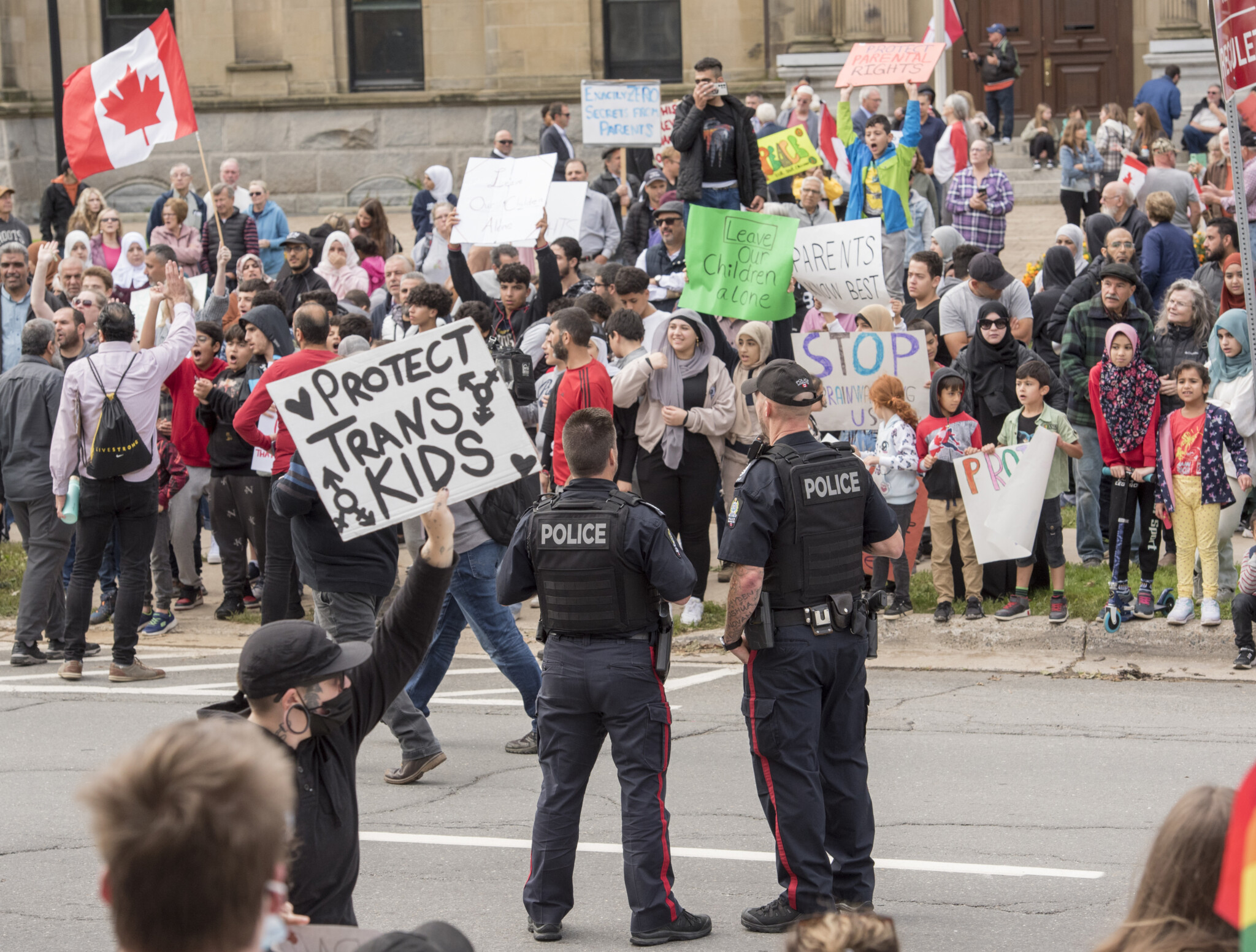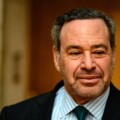Alberta Premier Danielle Smith announced on January 31 that her government would ban hormonal interventions for those under the age of 16 and gender transition surgeries under the age of 18. She recently reiterated that promise, though Alberta has yet to substantively act on this announcement. Geoff Russ weighed whether these policies were fair or went too far here in The Hub. I’d argue that not only is this the right policy approach but one that provincial governments around the country need to follow.
With every week that passes, new developments and stories illustrate the need for this policy change. For example, the National Post published a story of how an Ontario school called the Children’s Aid Society numerous times to report parents who didn’t support their grade five child’s gender transition and actively tried to hide their daughter’s social transition from the parents. And yet, the daughter’s transgender identity didn’t last. A medical transition would have been premature and ultimately a mistake.
It is important first to note that the goal of such gender-related hormonal and surgical interventions is to treat a very real problem. Gender dysphoria is a diagnosable clinical disorder, listed in the American Psychiatric Association’s Diagnostic and Statistical Manual of Mental Disorders (DSM-5-TR). Gender incongruence is the corresponding condition in the World Health Organization’s International Classification of Diseases (ICD-11). The issue underlying these diagnoses is an incongruence between one’s biological sex and one’s self-identified gender. This incongruence can often lead to significant distress and even suicidal ideation.
Medical transitioning aims to alleviate this incongruence and the accompanying distress by transforming the body to match the mind. Puberty blockers prevent the development of undesired secondary sex characteristics. Opposite-sex hormones spur the development of the opposite secondary sex characteristics. Surgical interventions—vaginoplasties, mastectomies, and phalloplasties—remove sexual organs or create simulacra of sexual organs.
And yet, despite claims to the contrary, this treatment approach fails to solve the underlying problem. The independent Cass Review of the gender identity service in the United Kingdom found that there was no evidence to suggest that medical transitioning increased well-being. In fact, each of these medical interventions has a lengthy list of side effects that are well documented in the medical literature, including infertility, low bone density, and cardiovascular complications. As such, we know medical transitioning can harm well-being but there is little to no evidence that it can improve it.
A growing number of Western nations are reaching the same conclusions. Sweden, Finland, the United Kingdom, and a majority of American states have all drastically curtailed medical transitioning in recent years. While the lack of high-quality evidence to support medical transitioning holds true across the age spectrum, these jurisdictions have specifically focused on restricting these inventions for minors. Many more European countries, as presented in a new study by the Aristotle Foundation for Public Policy, are articulating in legislation or regulation minimum ages, generally 16 or 18, for medical transitioning.
Yet here in Canada, every province (with the partial exception of Nova Scotia) fails to have minimum age requirements to access hormonal and surgical interventions. Government and media sources have reported that “bottom” surgery isn’t available to minors under the age of 18, though this author has yet to see any stated policy by a regulatory college or ministry of health that articulates such a policy. I filed a data request with the Canadian Institute of Health Information, however, and was able to verify that there have indeed been a handful of “bottom” surgeries performed on minors under the age of 18 in the past five years. Over three hundred teenage girls have had “top” surgeries, the youngest of whom was 14. Again, no minimum age for these procedures is specified.

People participate in the Trans Pride March, in Toronto on Friday July 1, 2016. Eduardo Lima/The Canadian Press.
When it comes to puberty blockers and cross-sex hormones, there are also no legislative, regulatory, or policy age requirements. When it comes to these interventions, we don’t even know the extent of the problem. After repeated requests to CIHI, provincial ministries of health, and local health authorities, it seems that no medical body records the number of prescriptions for puberty blockers and cross-sex hormones, much less the number of initial referrals to gender clinics for gender dysphoria.
One of the available sources is a 2016 study entitled “Trans Youth Can!” which documents exponential growth from perhaps 10 referrals for puberty blockers or gender-affirming hormones in 2004 to over 1000 referrals in 2016. That number today, eight years later, is likely far higher. In this area, Canada is an information vacuum.
And then there is the question of consent. Provincial and federal legislation requires minors to reach the age of majority to vote, get a tattoo, or even adopt a pet. If these decisions, which carry no irreversible implications to the long-term health and well-being of a human being, are reserved for the age of majority, how is it logically consistent to allow children and adolescents to legally consent to hormonal and surgical interventions?
Neuroscientists suggest that the human brain continues to develop until the age of 25. Social psychologists state that identities are particularly in flux during teenage years due to pubertal changes and peer influence. A growing number of people, like Michelle Zacchigna, who have medically transitioned have regretted their transition and detransitioned. And any parent will attest that the desires of their children are fickle.
This all suggests that the prudent policy would be to ban medical transitioning for minors.
A strong argument could be made that Canada should even go beyond minors and restrict the practice until prospective patients reach the age of 25 or review the practice for all adults, given the uncertainty of the long-term benefits of such a transition. Indeed, the U.K.’s Cass Review, which focused exclusively on pediatric gender services, has sparked a review of the adult gender services as well. We may or may not get to that point here in Canada too. But that is a different discussion to be had that reasonable people can disagree on, given its focus on the medical decisions of fully informed adults. With the issue of consent and the rapid rise of gender dysphoria among minors being focal points of this discussion, however, gender medicine for minors is certainly the arena where action is needed most urgently.
Until about a year ago, this issue might have been considered a third rail when it came to Canadian politics. As Hub contributor Dave Snow reported, the Canadian media was surprisingly silent when the groundbreaking Cass Review was released. The intellectual and political elites of the country have voiced how limiting medical transitioning would violate the rights of transgender youth.
But the Canadian public is onside with the idea that medical transitioning isn’t appropriate for minors. A Leger poll from February found that Canadians who oppose all gender reassignment surgeries for minors outnumbered those who support such surgeries without the need for parental consent by a margin of four to one. A nearly identical proportion oppose hormonal interventions for those under the age of 16. A Nanos poll a month later found that 42 percent of Canadians are uncomfortable with minors under the age of 18 accessing hormone therapy, while only 17 percent are comfortable with these interventions. These results are remarkably similar in provinces across Canada.
It is up to the provinces to act. Alberta has plans to introduce legislation this fall to limit medical transitions for minors. Other provinces need to follow suit. Various policy instruments could be on the table. Provinces could imitate Alberta and introduce comprehensive legislation on the topic. Ministries of health or justice could issue new regulations limiting medical transitioning to adults only. Premiers could choose not to fund hormonal or surgical interventions for minors in their public health plans. Or provincial colleges of physicians and surgeons could take a hard look at the evidence and growing international consensus and update their own clinical guidance.
Either way, medical transitioning for minors needs to be curtailed in Canada. The health and well-being of our children are at stake.









